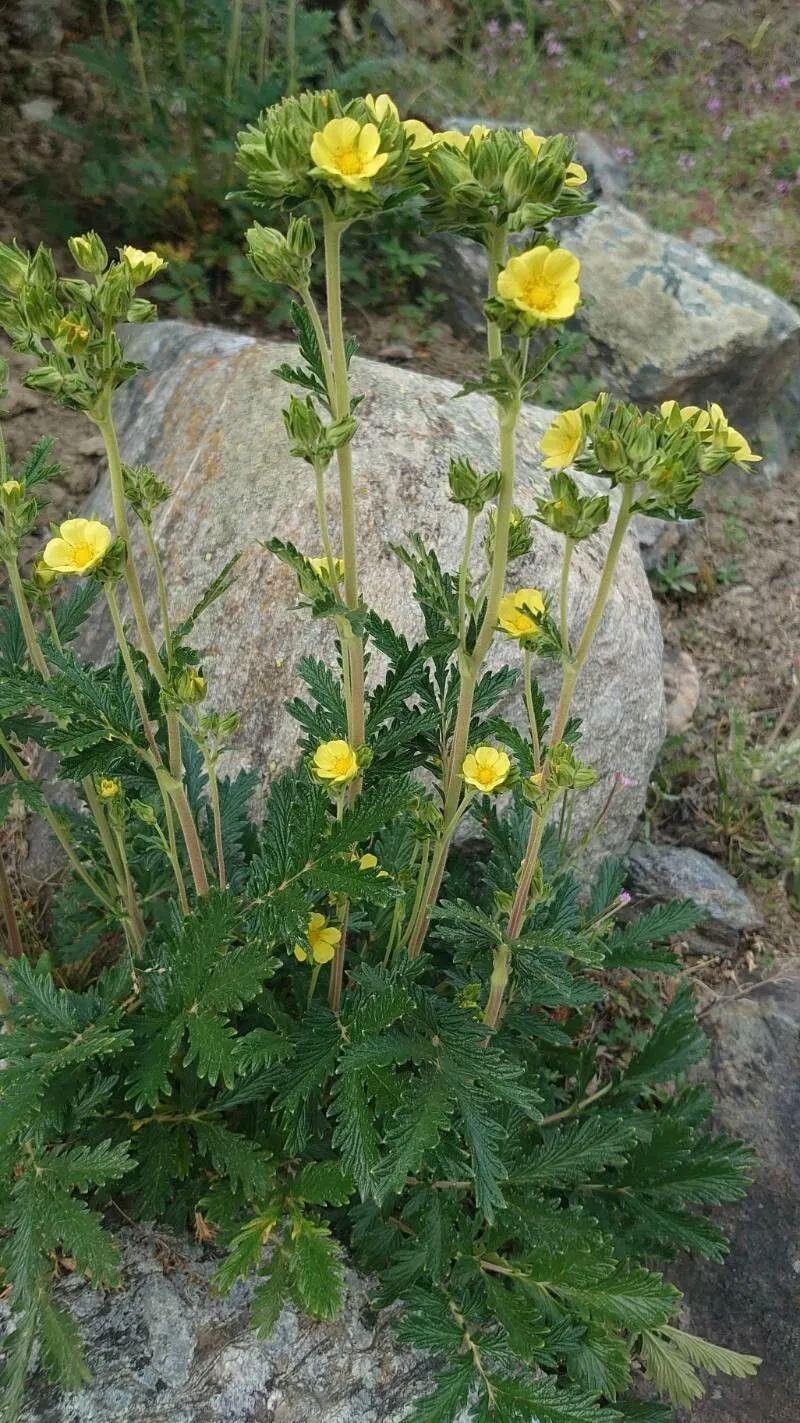
Author: L.
Bibliography: Mant. Pl. 1: 76 (1767)
Year: 1767
Status: accepted
Rank: species
Genus: Potentilla
Vegetable: False
Observations: Spain, Italy, E. Europe to Mongolia, Subarctic America to W. & C. Europe
Pennsylvania cinquefoil, known scientifically as Potentilla pensylvanica, is a fascinating perennial herb belonging to the Rosaceae family. Described in Mantissa Plantarum in 1767 by the renowned botanist Carl Linnaeus, this species boasts a widespread distribution across various geographical regions. It has been observed in Spain, Italy, Eastern Europe extending to Mongolia, and from Subarctic America to Western and Central Europe.
The plant is characterized by its robust and adaptive nature, enabling it to thrive in a variety of habitats. It typically grows in open fields, meadows, and grasslands, where its low, clumping form can easily be overlooked. Pennsylvania cinquefoil bears delicate, yellow flowers that are not only attractive but also play a crucial role in local ecosystems, providing nectar for pollinators such as bees and butterflies.
The foliage of Potentilla pensylvanica is equally noteworthy; its leaves are pinnate with numerous small, toothed leaflets that give the plant a finely textured appearance. The leaves are covered with fine hairs, contributing to its silvery-grey hue, which is a common characteristic within its genus.
Ecologically, Potentilla pensylvanica serves as an important species within its native and introduced ranges. Its hardy nature allows it to colonize disturbed soils, thereby playing a part in soil stabilization and preventing erosion. Additionally, it forms part of the diet for various herbivorous mammals, promoting biodiversity.
In gardens and landscape design, Pennsylvania cinquefoil is valued for its durability and minimal maintenance requirements. It can be a delightful addition to rock gardens, border fronts, and wildflower mixtures, where its vibrant blooms and textured foliage add aesthetic appeal.
Overall, Potentilla pensylvanica exemplifies resilience and adaptability, making it a notable species within the diverse Rosaceae family. Its presence across continents underscores the ecological versatility and evolutionary success of this remarkable flowering plant.
Eng: pennsylvania cinquefoil, prairie cinquefoil
Fra: potentille de pennsylvanie
En: Pennsylvania cinquefoil, Prairie cinquefoil
Fi: Siperianhanhikki
Fr: Potentille de Pennsylvanie
De: Pennsylvanisches Fingerkraut
It: Cinquefoglia di Pensilvania, Cinquefoglia di Pennsilvania
Nv: Azeeʼ ntłʼinítsoh
Fa: پنجهبرگ پنسیلوانیایی
© copyright of the Board of Trustees of the Royal Botanic Gardens, Kew.
Taken Jan 4, 2021 by Diego Alex (cc-by-sa)
Taken Jul 15, 2005 by Photoflora – Jean-Luc TASSET (©)
Taken Aug 29, 2021 by Sergio Moliner (cc-by-sa)
Taken Jun 19, 2022 by Manuëlle (cc-by-sa)
Taken Aug 8, 2022 by Шамхалов Магомед (cc-by-sa)
Taken Jul 11, 2020 by Sergio Moliner (cc-by-sa)
Taken Jun 19, 2022 by Manuëlle (cc-by-sa)
Taken Jun 19, 2022 by Manuëlle (cc-by-sa)
Taken May 4, 2020 by richard lamarca (cc-by-sa)
Taken Jun 28, 2018 by raul (cc-by-sa)
Taken Jul 15, 2005 by Photoflora – Jean-Luc TASSET (©)
Taken Jun 19, 2022 by Manuëlle (cc-by-sa)
Taken Jan 1, 1970 by Photoflora – L’Abbé COSTE (©)
Growth habit>: Forb/herb
Family: Myrtaceae Author: (F.Muell.) K.D.Hill & L.A.S.Johnson Bibliography: Telopea 6: 402 (1995) Year: 1995 Status:…
Family: Rubiaceae Author: Pierre ex A.Froehner Bibliography: Notizbl. Bot. Gart. Berlin-Dahlem 1: 237 (1897) Year:…
Family: Sapindaceae Author: Koidz. Bibliography: J. Coll. Sci. Imp. Univ. Tokyo 32(1): 38 (1911) Year:…
Family: Asteraceae Author: A.Gray Bibliography: Pacif. Railr. Rep.: 107 (1857) Year: 1857 Status: accepted Rank:…
Family: Fabaceae Author: Medik. Bibliography: Vorles. Churpfälz. Phys.-Ökon. Ges. 2: 398 (1787) Year: 1787 Status:…
Family: Aspleniaceae Author: (Cav.) Alston Bibliography: Bull. Misc. Inform. Kew 1932: 309 (1932) Year: 1932…